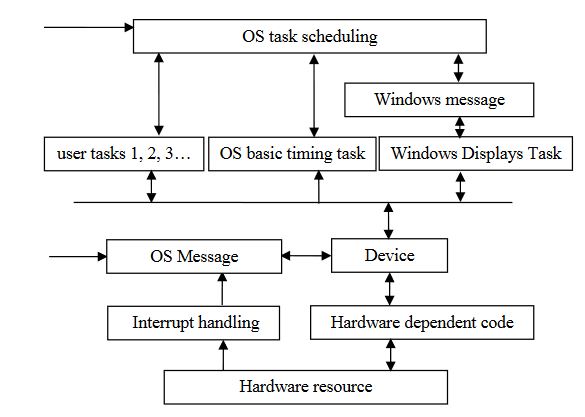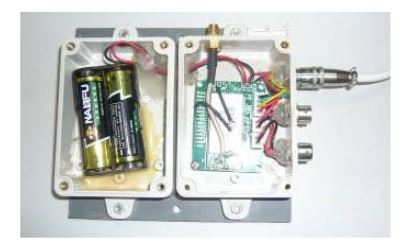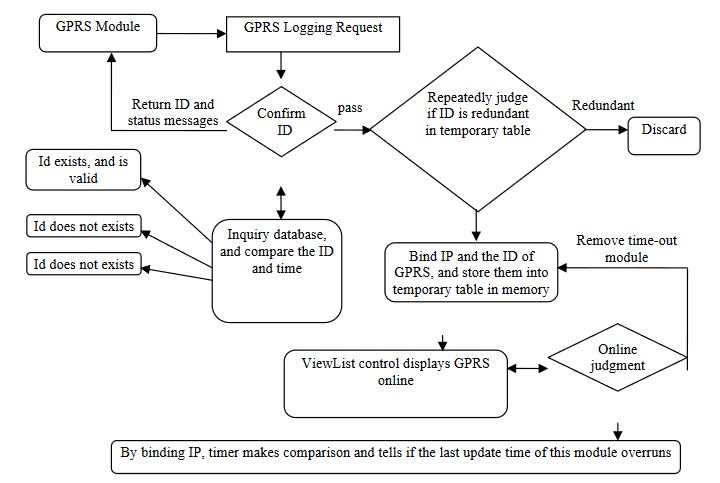ABSTRACT
A wireless sensor network-based automatic monitoring system is designed for monitoring the life conditions of green house vegetables. The complete system architecture includes a group of sensor nodes, a base station, and an internet data center. For the design of wireless sens or node, the JN5139 micro-processor is adopted as the core component and the Zigbee protocol is used for wireless communication between nodes.
With an ARM7 microprocessor and embedded ZKOS operating system, a proprietary gateway node is developed to achieve data influx, screen display, system configuration and GPRS based remote data forwarding. Through a Client/Server mode the management software for remote data center achieves real-time data distribution and time-series analysis.
Besides, a GSM-short-message-based interface is developed for sending real-time environmental measurements, and for alarming when a measurement is beyond some pre-defined threshold. The whole system has been tested for over one year and satisfactory results have been observed, which indicate that this system is very useful for greenhouse environment monitoring.
SYSTEM ARCHITECTURE

Figure 1. Architecture of greenhouse monitoring sy stem based on wireless sensor network
The system consists of three modules, which are a node module, a base station module and a data distribution module (Figure 1). The node module is placed inside greenhouses, and the base station module is placed in public areas outside the greenhouses. The base station is equipped with a LCD screen so that the real-time values of temperature and humidity, both inside and outside greenhouses, and soil moisture can be observed.
SYSTEM FUNCTIONAL MODULES

Figure 3. Architecture of ZKOS
The proprietary embedded operating system ZKOS (Shingle Operation System) has a small amount of code, and is less dependent on system hardware features such as stacks, registers, timers and interrupters. Therefore, it can be implemented on different types of mono-chips. The architecture of embedded ZKOS operating system is shown in Figure 3.

Figure 5. An encapsulated node
Considering the real environment, the circuit board of node is tailored, and the interfaces compatible with a potentially hostile environment are selected. The battery set and the circuit board are encapsulated in separate packages, making it convenient for battery replacement and circuit protection (Figure 5).
DATA RELEASE MODULE

Figure 15. TCPServer workflow
The data release module is installed in the Beijing host server, comprising the TCPServer program and the WEB release program. The TCPServer is used to receive and analyze data from the remote GPRS communication module. This function is achieved by monitoring a specified port and receiving the real-time transmission data with a multithreading technique and the TCP/IP communication protocol. The operation mode is a fussy 3-layer architecture including surface layer, logical layer, and data layer (Figure 15).
FIELD TEST OF VEGETABLE GREENHOUSE MONITORING SYSTEM
Since 2008, an experimental wireless-sensor-network-based monitoring system for vegetable greenhouses has been running in the AnsaiHou Trench Gate Village demostration area. Since 2009, the long-term field-test has been carried out in the Olympic Games Science and Technology Park of Chinese Academy of Sciences, and satisfactory experimental data have been observed.
CONCLUSIONS
Developed on an independently-developed wireless sensor network platform, the reported monitoring system for vegetable greenhouses is a successful combination of wireless sensor network technology and the mobile communication technology in digital agriculture. This system possesses the following merits: (1) it is low-cost, scalable and reliable with good processing capability; (2) the design of hardware and software watchdogs can ensure the system will be online in a real-time manner; (3) multiple interface designs allow the system to access multiple sensors;
(4) through the Internet users can make inquiries of the real-time environmental parameters inside the greenhouse, and can control the facilities in greenhouses by making use of China Mobile’s SMS remotely. Our aim of the monitoring system for vegetable greenhouses proposes higher requirements for the system, such as stability and fast reaction. As the field conditions change frequently, improvements to the system are needed. Particularly, the capability to deal with abnormal situations needs to be strengthened.
Source: Beijing Normal University
Authors: Xiu-hong Li | Xiao Cheng | Ke Yan | Peng Gong
>> More Wireless Embedded Projects for Final Year Students